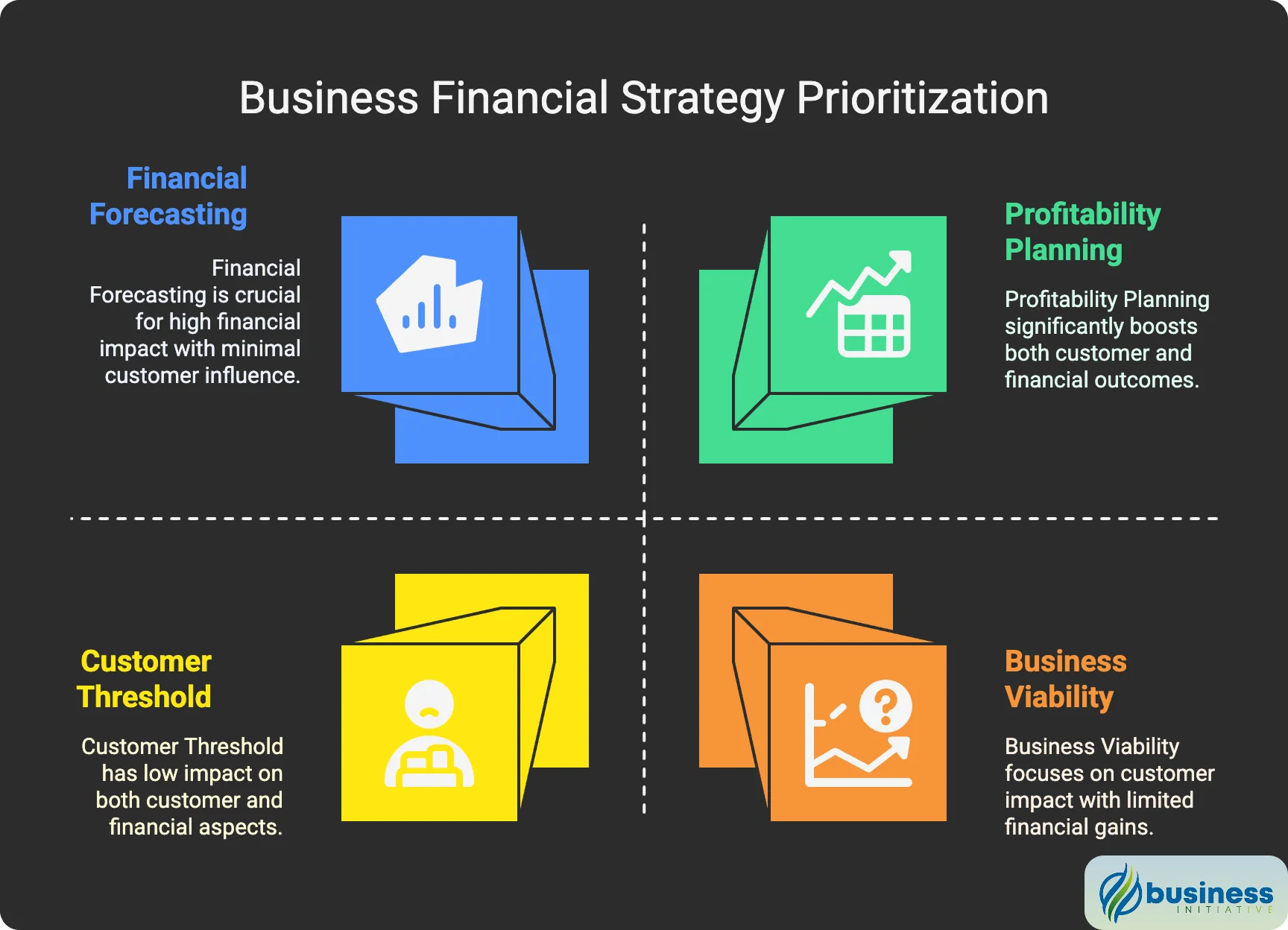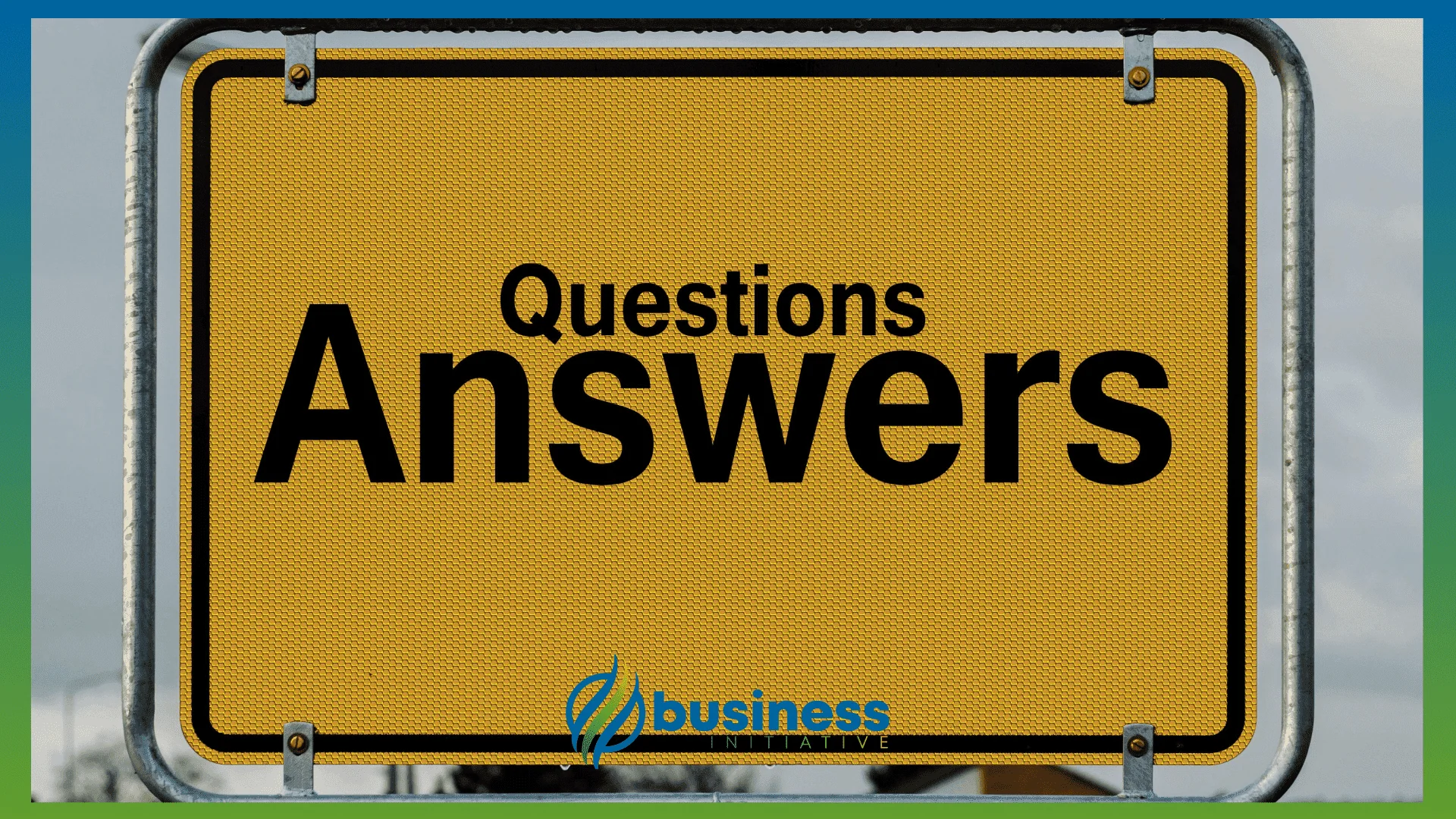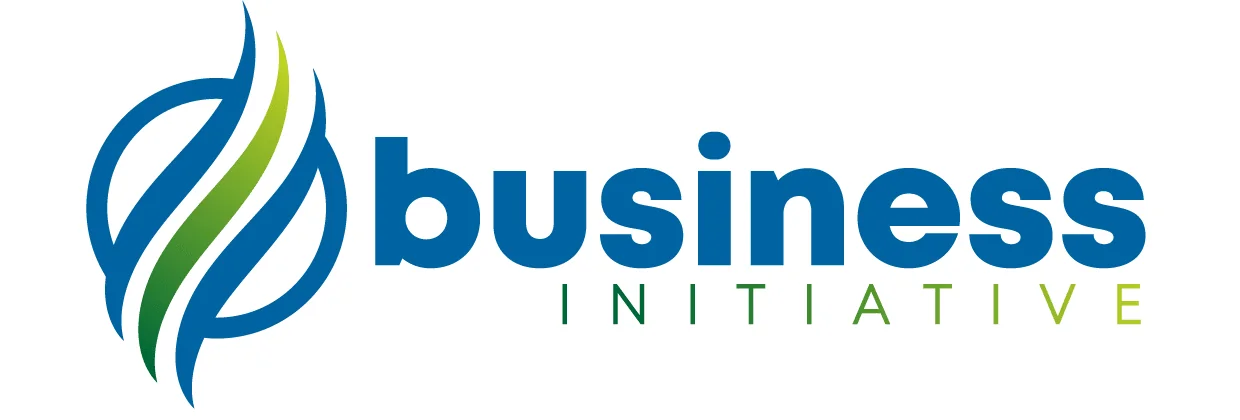Understanding your break-even point is fundamental to business success and profitability planning. This critical metric reveals exactly how many customers you need to cover all your costs and transition from loss to profit, making it essential for pricing strategies, business planning, and financial forecasting.
Whether you’re launching a new product, evaluating pricing models, planning marketing campaigns, or seeking investment, break-even analysis provides the foundation for making informed decisions about minimum sales targets, pricing optimization, and operational efficiency.
Our comprehensive break-even calculator not only determines your customer threshold but also provides strategic insights into cost structure optimization, pricing strategies, and profitability acceleration to help you achieve sustainable business growth.
 Table of Contents
Table of Contents
 Key Takeaways
Key Takeaways
- Calculate precise customer threshold
- Optimize pricing and cost structure
- Plan marketing and sales targets
- Evaluate business model viability
- Make informed investment decisions
Quick Reference: Break-Even Benchmarks
| Business Type | Typical Break-Even Timeline | Customer Volume Range | Key Focus Areas |
|---|---|---|---|
| SaaS Startup | 12-24 months | 100-1,000 customers | Customer acquisition cost optimization |
| E-commerce | 6-18 months | 500-5,000 orders/month | Inventory and shipping efficiency |
| Service Business | 3-12 months | 50-500 clients | Utilization rate and pricing |
| Manufacturing | 18-36 months | 1,000-10,000 units | Production scale and efficiency |
Understanding Break-Even Analysis

Break-even analysis involves three critical components:
- Fixed Costs: Expenses that remain constant regardless of sales volume (rent, salaries, insurance)
- Variable Costs: Costs that change with each sale (materials, shipping, commissions)
- Revenue per Customer: Average amount each customer pays
- Formula: Break-Even Point = Fixed Costs ÷ (Revenue per Customer - Variable Cost per Customer)
How to Use This Calculator
Quick Start Guide
Calculate Fixed Costs
Add up all monthly expenses that don't change with sales volume
Determine Revenue per Customer
Calculate average amount each customer pays per transaction
Calculate Variable Costs
Determine costs that vary with each sale or customer
Analyze Results
Review customer threshold and optimization opportunities
Break-Even Analysis
Interpreting Your Results
Understanding your break-even analysis results helps guide strategic business decisions:
Break-Even Point Analysis
Low Break-Even Point (Under 100 customers)
- Efficient cost structure with high margins
- Quick path to profitability
- Lower financial risk
- Focus on customer acquisition and retention
Moderate Break-Even Point (100-500 customers)
- Balanced cost structure
- Reasonable timeline to profitability
- Standard risk profile for most businesses
- Optimize both costs and pricing
High Break-Even Point (500+ customers)
- High fixed costs or low margins
- Longer timeline to profitability
- Higher financial risk
- Requires significant cost optimization or pricing adjustment
Key Metrics to Monitor
Contribution Margin: The amount each sale contributes to covering fixed costs
- Higher margins = Lower break-even point
- Target: 60-80% for service businesses, 40-60% for product businesses
Customer Acquisition Cost (CAC): How much you spend to acquire each customer
- Should be significantly lower than customer lifetime value
- Target: CAC should be recovered within 3-12 months
Customer Lifetime Value (CLV): Total revenue from a customer relationship
- Higher CLV allows for higher acquisition costs
- Target: CLV should be 3-5x higher than CAC
Break-Even Optimization Strategies
Reducing Fixed Costs
1. Operational Efficiency
- Negotiate better rates for rent, insurance, and utilities
- Implement automation to reduce labor costs
- Consolidate vendors and negotiate volume discounts
- Consider shared services or co-working spaces
2. Technology Optimization
- Use cloud services to reduce IT infrastructure costs
- Implement efficient software solutions
- Automate repetitive processes
- Optimize subscription services and eliminate redundancies
3. Flexible Cost Structures
- Convert fixed costs to variable where possible
- Use contractors instead of full-time employees initially
- Implement performance-based compensation
- Consider revenue-sharing partnerships
Increasing Revenue per Customer
1. Pricing Optimization
- Test different pricing models and structures
- Implement value-based pricing strategies
- Create premium service tiers
- Bundle products and services for higher average order values
2. Upselling and Cross-selling
- Develop complementary products or services
- Create customer upgrade paths
- Implement recommendation systems
- Train sales teams on value-added selling
3. Customer Retention
- Focus on customer lifetime value optimization
- Implement loyalty programs and retention strategies
- Improve customer service and satisfaction
- Create subscription or recurring revenue models
Reducing Variable Costs
1. Supply Chain Optimization
- Negotiate better terms with suppliers
- Optimize inventory management
- Implement just-in-time delivery systems
- Consider vertical integration for key components
2. Process Efficiency
- Streamline production or service delivery processes
- Reduce waste and improve quality control
- Implement lean methodologies
- Optimize shipping and fulfillment operations
3. Technology Integration
- Automate variable cost processes
- Use data analytics to optimize operations
- Implement efficient customer service systems
- Leverage economies of scale
Pricing Strategy Insights
Value-Based Pricing
Understanding Customer Value
- Research what customers are willing to pay
- Identify unique value propositions
- Analyze competitor pricing strategies
- Test different price points with market research
Implementation Strategies
- Start with premium pricing and adjust down if needed
- Create multiple pricing tiers
- Offer free trials or freemium models
- Use psychological pricing techniques
Competitive Pricing Analysis
Market Research
- Analyze competitor pricing and positioning
- Understand market price sensitivity
- Identify pricing gaps and opportunities
- Monitor pricing changes and market reactions
Strategic Positioning
- Position based on value, not just price
- Differentiate through service or features
- Create pricing transparency and clarity
- Communicate value proposition effectively
Dynamic Pricing Strategies
Seasonal Adjustments
- Adjust pricing based on demand cycles
- Implement peak and off-peak pricing
- Use promotional pricing strategically
- Plan inventory and capacity accordingly
Customer Segmentation
- Develop different pricing for different segments
- Create volume discounts for larger customers
- Implement geographic pricing strategies
- Use personalized pricing where appropriate
Industry-Specific Considerations
SaaS and Software Companies
Key Metrics:
- Monthly Recurring Revenue (MRR) break-even
- Customer Acquisition Cost vs. Lifetime Value
- Churn rate impact on break-even calculations
- Freemium conversion rates
Optimization Focus:
- Reduce customer acquisition costs
- Increase customer lifetime value
- Optimize onboarding and activation
- Focus on product-market fit
E-commerce Businesses
Key Metrics:
- Average order value and frequency
- Shipping and fulfillment costs
- Return rates and their impact
- Seasonal variation effects
Optimization Focus:
- Optimize conversion rates
- Reduce cart abandonment
- Improve inventory turnover
- Enhance customer retention
Service Businesses
Key Metrics:
- Utilization rates and capacity planning
- Project profitability analysis
- Labor efficiency and productivity
- Client retention and referral rates
Optimization Focus:
- Increase billable hour utilization
- Optimize project management
- Develop recurring revenue streams
- Enhance service delivery efficiency
Manufacturing Companies
Key Metrics:
- Production capacity utilization
- Material cost fluctuations
- Quality control and waste reduction
- Economies of scale effects
Optimization Focus:
- Optimize production efficiency
- Reduce material waste
- Improve quality control
- Scale production effectively
Advanced Break-Even Analysis
Sensitivity Analysis
Variable Testing:
- Test different pricing scenarios
- Analyze cost structure changes
- Model growth scenarios
- Evaluate market condition impacts
Risk Assessment:
- Identify break-even point ranges
- Plan for best and worst-case scenarios
- Develop contingency strategies
- Monitor key performance indicators
Multi-Product Break-Even
Product Mix Analysis:
- Calculate break-even for each product line
- Optimize product portfolio for profitability
- Identify high and low-margin products
- Plan resource allocation accordingly
Cross-Subsidization:
- Use high-margin products to support others
- Create strategic product bundles
- Balance portfolio risk and return
- Plan product lifecycle management
Need help optimizing your break-even analysis and pricing strategy? Schedule a consultation with our business strategy experts at Business Initiative.
Stay informed about business strategies and tools by following us on X (Twitter) and subscribing to our newsletter.
FAQs - Frequently Asked Questions About Break-Even

What's a good break-even point for a new business?
A good break-even point depends on your industry and business model.
Generally, service businesses should aim for 50-200 customers, SaaS companies 100-1,000 customers, and e-commerce 500-5,000 monthly orders.
Learn More...
Break-even benchmarks vary significantly by industry, business model, and operational complexity.
Service businesses typically achieve break-even with 50-200 customers due to lower overhead costs and higher margins.
Software-as-a-Service companies usually need 100-1,000 customers depending on subscription pricing and customer acquisition costs.
- Service businesses: 50-200 customers (2-6 months timeline)
- SaaS companies: 100-1,000 customers (6-18 months timeline)
- E-commerce: 500-5,000 monthly orders (3-12 months timeline)
- Manufacturing: 1,000-10,000 units (12-24 months timeline)
The key is achieving break-even within 6-24 months of launch, depending on your industry and available capital.
How often should I recalculate my break-even point?
Recalculate monthly during the startup phase and quarterly once established.
Update immediately after major changes in pricing, cost structure, or business model.
Learn More...
Break-even point calculations should be updated regularly to reflect changing business conditions.
During the startup phase and rapid growth periods, monthly recalculation helps track progress and identify trends early.
Established businesses can move to quarterly calculations as part of regular financial planning.
- Startup phase: Monthly calculations to track progress
- Growth phase: Bi-monthly during periods of rapid change
- Established phase: Quarterly as part of regular planning
- Major changes: Immediate recalculation after pricing or cost changes
During economic uncertainty or rapid growth phases, consider weekly calculations for accurate planning.
What if my break-even point seems too high?
A high break-even point indicates either high fixed costs or low contribution margins.
Focus on reducing fixed costs, increasing prices if market allows, or improving your value proposition.
Learn More...
High break-even points typically result from unfavorable cost structures or pricing models that require optimization.
Start by analyzing your contribution margin to identify the primary issue.
If fixed costs are the problem, look for opportunities to reduce overhead or negotiate better terms.
- Fixed cost reduction: Negotiate rent, utilities, insurance
- Pricing optimization: Test higher prices, create premium tiers
- Variable cost reduction: Optimize supply chain, negotiate supplier terms
- Value proposition improvement: Enhance product features, improve customer service
Consider whether your business model is fundamentally viable if break-even requires unrealistic customer numbers.
Should I include my salary in fixed costs?
Yes, include a reasonable salary for yourself in fixed costs, especially when planning for investors or loans.
Use market rates for similar positions in your industry.
Learn More...
Including your salary in break-even calculations provides a realistic view of business viability.
This is particularly important when seeking investment or loans, as lenders expect to see realistic compensation.
Use market-rate salaries for comparable positions in your industry and geographic area.
- Investment planning: Essential for realistic projections and investor credibility
- Loan applications: Lenders expect to see reasonable owner compensation
- Business valuation: Proper salary allocation affects business value
- Tax planning: Salary vs. distributions have different implications
If you're bootstrapping and not taking a salary, calculate break-even both with and without your salary.
How does seasonality affect break-even calculations?
Calculate separate break-even points for peak and low seasons.
Use annual averages for overall planning, but prepare for seasonal cash flow variations.
Learn More...
Seasonal businesses require more sophisticated break-even analysis that accounts for dramatic variations throughout the year.
Create separate break-even calculations for your peak season, low season, and shoulder periods.
Build cash reserves during peak seasons to cover fixed costs during low periods.
- Peak season analysis: Calculate break-even during highest revenue periods
- Low season planning: Ensure you can cover fixed costs during slowest months
- Annual averaging: Use weighted averages for overall business planning
- Cash flow management: Build reserves during peaks to cover valleys
Consider seasonal financing options like revolving credit lines to smooth cash flow variations.
What's the difference between cash and accounting break-even?
Cash break-even focuses on actual cash flow, excluding non-cash expenses like depreciation.
Accounting break-even includes all expenses per financial statements.
Learn More...
Cash break-even and accounting break-even serve different purposes and provide different insights.
Cash break-even calculates where cash inflows equal cash outflows, excluding non-cash items.
Accounting break-even includes all expenses according to GAAP, including non-cash items.
- Cash break-even: Focuses on actual money needed to sustain operations
- Accounting break-even: Includes all accounting expenses for complete picture
- Operational planning: Cash break-even is more relevant for day-to-day management
- Financial reporting: Accounting break-even aligns with formal statements
For operational planning and cash flow management, focus on cash break-even as it reflects actual money needed.
How do I factor in customer acquisition costs?
Include customer acquisition costs as either fixed costs (if ongoing marketing) or variable costs (if per-customer).
Ensure customer lifetime value significantly exceeds acquisition costs.
Learn More...
Customer acquisition costs are critical for accurate break-even analysis, especially for businesses with significant marketing expenses.
If you have ongoing marketing expenses, include these as fixed costs in your break-even calculation.
If you pay commissions or specific costs for each customer acquired, include these as variable costs.
- Fixed CAC approach: Include ongoing marketing budgets in fixed costs
- Variable CAC approach: Add per-customer acquisition costs to variable costs
- Blended approach: Split between fixed brand marketing and variable performance marketing
- Payback period: Calculate how long to recover CAC through customer payments
For subscription businesses, ensure customer lifetime value is at least 3-5 times higher than customer acquisition cost.


